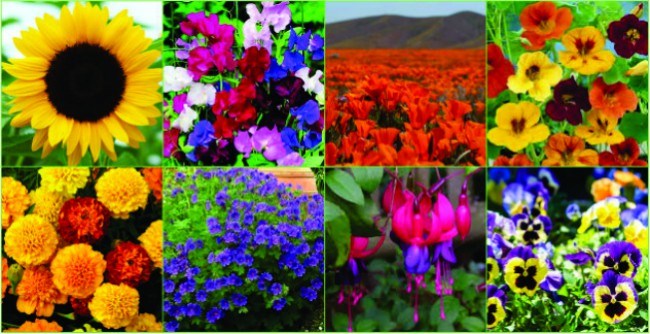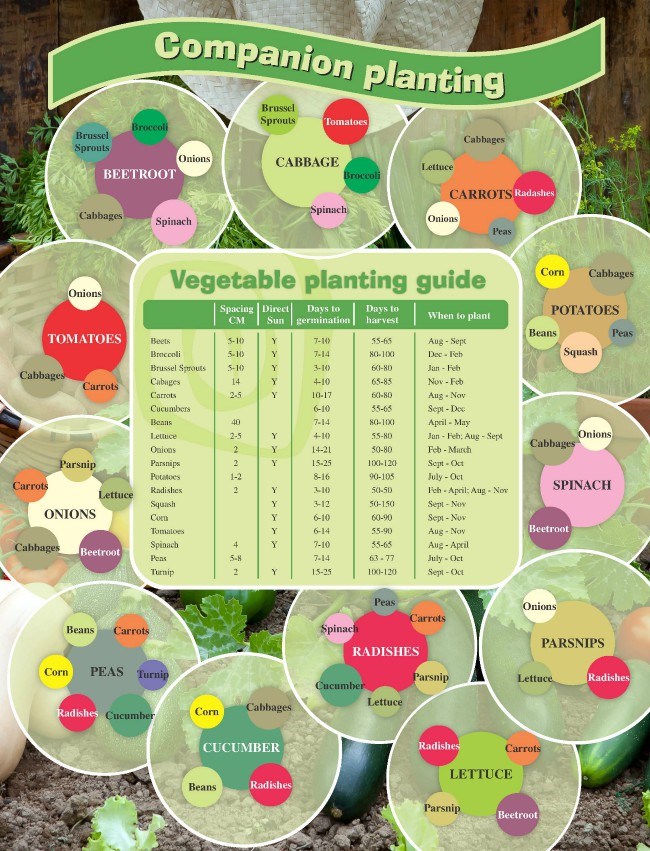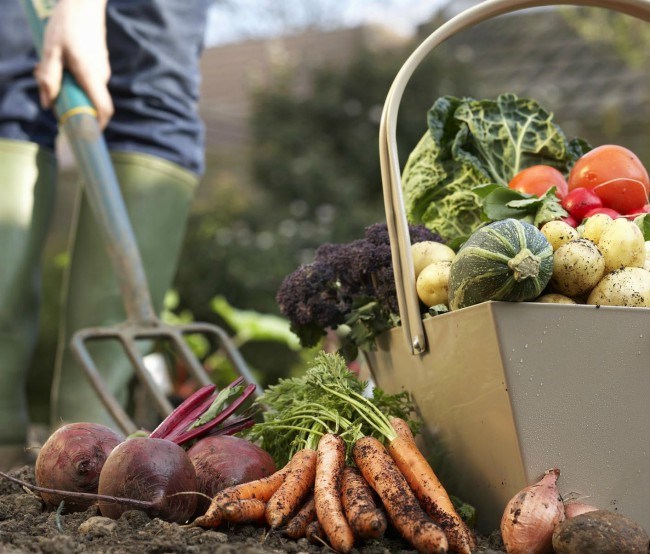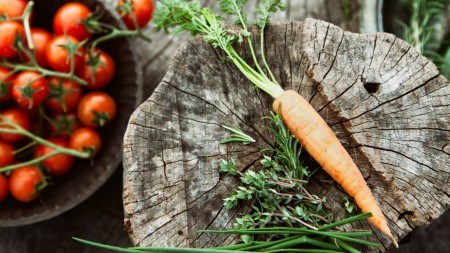Whether you’re an experienced gardener or not, these practical techniques will help get you started.
Starting can be a daunting task, but the key is to start small in the first year and plant only a few of your favourite flowers/veggies. This will allow you more of a chance of success and a greater feeling of accomplishment. In the years to come, you can increase the size of your garden with each planting season.
A little planning can go a long way toward making a garden you'll love working in as much as admiring. “Maintaining a care–free garden is a rewarding experience. Planting organic vegetables is becoming more and more popular, with everyone starting to enjoy healthy, fresh vegetables from their own gardens. It is always a good idea to plan according to season changes and adapting to your own climate. Ideal conditions result in healthier plants, fewer pest and disease problems” says Tihara Baker, Relationship Manager of Engel & Völkers Southern Africa. We take a look at some aspects to guide you from being a novice to becoming an expert gardener.
What to plant?
It is lovely to have an array of pretty flowers covering your landscape, however some people say a plant has to earn its place in the garden and be productive in some way. Starting to grow your own vegetables is more cost effective, convenient and most importantly, is of a higher nutrient value.
This doesn’t mean that your vegetable patch must be devoid of any flowers or vice versa. Inter-planting flowers and vegetables play an important role in any organic garden. Flowering plants will protect your vegetables from insects and make them more productive. We habitually grow flowers and vegetables in different beds - why not plant them together? As long as each plant’s individual requirements are met there should not be any problems with mixing them.
Many vegetables are beautiful in their own right and can be added to an established flower bed. Peas and beans can easily scramble up a fence or wall and herbs can likewise grow amongst the flowers. The best flowers to choose to plant amongst your vegetables are those rich in high-protein pollen that provide sources of nectar throughout the year like Marigold, Daisy or Nasturtiums.
You can have a spirited mixture that is both attractive and functional in any setting. Be patient as you cultivate your relationship with your garden and the earth. Before long, you’ll reap the benefits.
8 Easy flowering plants for beginners
- Sunflowers - easy for kids to grow
- Sweet Peas - the more you pick the more flowers they produce!
- Californian Poppy – need next to no water at all
- Nasturtium -Quick growing and colourful!
- Marigold - These easy and fast growing
- Hardy Geranium - Reliable, low maintenance ground cover
- Fuchsias - Easy to grow patio plants best loved for adding colour to hanging baskets
- Pansy - with their cheery faces, they are easy plants to grow from seed

Grow a Simple Salad
Tomatoes - most popular vegetable for any size garden can grow in hanging baskets or containers
Cucumbers - Cucumbers like sunlight and warm temperatures, as well as support for climbing
Lettuce – sow additional seeds every two weeks for a continuous harvest
Spring Onions- Even the tiniest plot or pot will accommodate them
Radishes - take just 20 days to reach full size!
Chives - the champions of the herb world. They can handle almost any type of soil
Carrots - carrots are pretty easy to grow - grow in small gardens and even flower beds Green Beans - beans prefer full sun and well-drained soil
Zucchini - grown in containers or in soil. Grow easily from seeds.
Snap Peas - These quick growers’ pretty much take care of themselves
Know when to plant what
As many gardeners know, understanding when to plant vegetables and what to plant with what, is very important to ensure that they thrive and are healthy. Vegetables differ not only in size, colour, shape, and taste, but in their preferred growing conditions, too. If you are unsure of what to plant when, or with what, take a look at our comprehensive vegetable planting guide.

Mulching
Mulching improves the soil quality, helps retain moisture and gives your garden a neat appearance – with less weeds. Now’s the ideal time to mulch your beds! “Mulches are best applied from mid- to late spring and autumn, when the soil is moist and warm,” advises Mimi Rupp, a respected garden consultant and founder of Stone etc. in Port Elizabeth.
What to choose
When it comes to mulch you have two choices:
Biodegradable mulches - leaf mold, garden compost, wood chippings, and well-rotted manure break down gradually to release nutrients and help to improve soil structure. The downside is that mulch will need replacing when the material has fully broken down.
Non-biodegradable mulches - slate, shingle, pebbles, gravel, stone chipping do not boost soil quality, but they do suppress weeds, conserve moisture and look decorative.
According to Rupp, beds and borders can be mulched entirely, but you need to take care not to smother low growing plants or to pile mulches up against the stems of woody plants.
These are her top tips:
To be effective, biodegradable mulches need to be between at least 5cm and 7.5cm thick
Lay mulches over moist soil, after removing weeds, including their roots
Single trees and specimen shrubs are best mulched to the radius of the canopy
There is no need to remove mulches to apply fertilizers. Spread fertilizers over mulches in late winter so they are washed down to roots when it rains
A buildup of mulch can produce a hard layer, which is difficult for water to penetrate. Avoid this by only replacing the mulch when it has completely rotted away
Composting:
In order to have healthy plants they need compost, which is decayed organic material.
Garden waste: Grass cuttings are high in nitrogen and leaves are a good source of carbon. You can also add twigs, dead flowers and those weeds that haven’t gone to seed.
Household waste: Egg boxes, egg shells, teabags, coffee grounds, veggie scraps, newspaper and firewood ash.
Don’t use: Cooked or raw meat, dairy products, citrus, animal faeces, diseased or insect-infested plants and plants that have been sprayed with chemicals.
How to compost
Compost bins: Position bins directly on soil/grass as this allows insects, worms and other micro-organisms to access the contents and assist in breaking down the waste. Give it a good mix once a week. After 3–6 months, the contents should start looking like a dark soil similar to garden soil.
Compost heaps: Once you’ve chosen a suitable spot, simply begin a heap, enclose it with bricks, plastic or wooden fencing. Start with small branches and twigs to create ventilation at the bottom of the pile, then add garden and household waste – alternate layers of green (grass clippings, household waste) with brown (dry leaves, twigs, newspaper). After about 6 months, your compost should be dark brown, crumbly and ready to use.
Compost worm farms: These are a great way to turn kitchen waste into organic garden food. Known as vermiculture, the process involves feeding kitchen waste to worms. The worms then reward you with nutrient-rich vermicompost and organic vermitea – by-products of worm castings – which can be used to feed soil and plants. Both are rich in microbes, good bacteria and enzymes.

Fertilisers
Fertilisers are another quick, convenient and reliable way to add nutrients to your soil. They are usually in granulated form; liquid form is also available in organic types. Organic fertilisers are more beneficial to the soil as they encourage earthworms and good bacteria thus improving the soil’s structure.
Make your own fertiliser
Used tea leaves and coffee grounds contain natural nitrogen which helps to promote growth
Blend kitchen vegetable scraps and egg shells in blender with cup of water, mix into soil around the plant’s base
Accumulate your banana peels, dry them out in the oven and place in a blender. Mix in 3 – 5 egg shells. Blend into a fine, yet still slightly coarse powder. Apply to the base of your plants like you would a granular fertiliser.
Make it a family event
Children are natural little gardeners as they are very curious, like to learn by doing, and love to play in the dirt. Kids will experience the satisfaction that comes from caring for something over time, while observing the cycle of life first-hand.
Having your kids help out with the gardening increases their self-esteem, helps develop a sense of ownership and most importantly helps foster relationships with family by spending fun quality time together. It is said that children who grow their own food are more likely to eat fresh, healthy fruits and vegetables.
Choose plants which are relatively easy to grow, have short growing seasons and are fun to harvest. Give the kids their own garden beds and tools and engage them through the entire process, from seed to table. Finally remember to show off their work to friends and family this will make them beam with pride.
Should you kids not be that keen on growing vegetables, give them a secluded corner of soil, perhaps outside a bedroom window. Allow children to let their imaginations flow and create a fairy garden. Screen the space with fragrant shrubs or creepers; bring in a selection of easy-going, pretty flowered plants and moss. Add a gnome or two with free-standing solar lights and watch the magic unfold.


